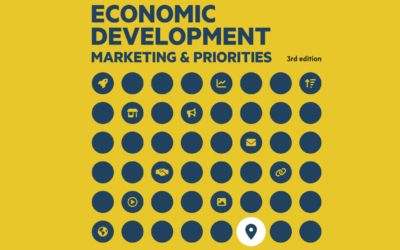
The disruption of the Chamber of Commerce industry has been a slow and steady destruction. COVID-19 has simply accelerated the trend, placing chambers of commerce in an ever-worsening crisis for the future of their existence. While the economy will recover after COVID is gone, traditional chambers may never recover.
Prior to COVID-19, chambers were already in increasing distress as new – and primarily digital – business models replaced core chamber of commerce value propositions. For example:
- Linkedin made finding new business customers faster, direct, efficient, and less costly than using chamber networks to connect with potential business customers and partners.
- Yelp reviews became a primary way that consumers evaluated who was a reputable and quality company to patronize. Framed Yelp ratings are taking over wall space that chamber plaques used to monopolize.
- MeetUp disintermediated chamber networking events enabling businesses and entrepreneurs to create personal networking through a self-service platform.

The COVID-19 pandemic and economic recession intensified and accelerated disruptive trends that chambers have been facing for years. Some ways that COVID-19 has specifically damaged chambers include:
- Small businesses have been hardest hit by COVID-19 resulting in many brick-and-mortar companies being closed temporarily, with many of these closures becoming permanent. Small businesses represent 99% of all businesses, so when the largest percentage of chamber customers is in a crisis, that has a direct correlation to the negative impact on chambers.
- Businesses are experiencing revenue stress as their income has declined. While companies that do business face-to-face have been especially hard hit such as retail, services, and tourism (all industries which are more likely to be chamber members) – we exist in an interconnected economy in which the distress of these companies impacts other industries. For example, if an accountant that can work from home loses 10 retail customers because they went out of business, it reduces that accountant’s income. As all of these types of businesses experience lost income, they are all looking for expenses to cut. While logical or not, many companies (including chambers) prioritize avoiding employee layoffs by cutting other expenses. Unfortunately, chamber membership is an expense that may be seen as something nice to have, but which they can go without during these difficult economic times.
This has forced chambers that had a multi-year plan to transition their services into a new reality in which they must immediately reinvent their organizations (including the creation of new types of value) or risk closure or irrelevance forever.
Chambers are responding and reinventing themselves spurred by the immediacy of COVID-19 economic pressures. These trends include:
Consolidation
Weaker companies during an economic downturn are often targets for acquisition by stronger/bigger companies, or they can partner with similar sized companies to consolidate to increase their combined strength through operational efficiency. These two options will be similar for chambers of commerce that are at risk of insolvency. They can either be absorbed into larger/regional chambers of commerce or they can merge with similar sized chambers to achieve operational economies of scale. One reason that consolidation will be emotionally unattractive is that operational efficiency is achieved by eliminating redundant employees.
CASE STUDIES: A recent example of a consolidation of smaller chambers into a regional chamber happened during the COVID-19 pandemic with the merging of the Carpinteria, Goleta, and Santa Barbara chambers of commerce into the new Santa Barbara South Coast Chamber of Commerce. In another example, COVID-19 played a role in finalizing a merger of chambers that had been under consideration for years.
Pivot to Economic Development
Many chambers have already transitioned to be actively involved in economic development. In many cases these chambers are the lead organization in their community for implementing economic development programs and policy. Economic development program and service delivery for a community has created greater financial security for chambers, as their work is typically funded by the local government.
CASE STUDIES: An example of a chamber and economic development integration occurred during the COVID-19 pandemic with the Lake Houston Area Chamber of Commerce and the Lake Houston Economic Development Partnership merging into the new Partnership Lake Houston. An example of a chamber, and not the local government being the primary economic development organization, is Expand Greater Springfield, which is a division of the Chamber of Greater Springfield.
Reinvent Small Business Services
Small businesses will remain at the core of most chamber of commerce’s future viability. However, what small businesses need today (and not just from their chamber) is different than the past. Chambers of commerce must seize the opportunity to deliver the new services, programs, and needs of contemporary small businesses.
CASE STUDIES: As an example of innovative small business service value creation, the Jackson Chamber in Tennessee recently launched an online program called “SizeUp Jackson” to provide small businesses in their area with access to market research and business intelligence so they can benchmark their performance, find new customers, and optimize marketing. The Colorado Springs Chamber and EDC also launched SizeUp COS to expand its services to local businesses and aspiring entrepreneurs by enhancing the Chamber’s digital business assistance, which is especially needed as a result of the COVID-19 economic crisis.
For any organization to sustain itself over many decades requires that it must constantly evolve and adapt to changing times. Sometimes these changes are gradual transitions from incremental modifications. Other times profound disruptions require transformative adaptation. Chambers of commerce have been in existence since 1599, but chambers of commerce today are very different. They have evolved to remain relevant or they have gone out of business. COVID-19 is the current crisis which will test whether chambers will be able to rapidly adapt or die.
About the Author: Mark Hays, IOM, has extensive expertise working with Chambers of Commerce and Economic Development Organizations across the USA implementing online programs to enable small business success. He is a sought-after thought leader in online small business assistance and has spoken at National League of Cities, SEDC, WACE, International Economic Development Council, C2ER, and state economic development conferences. Mark is Director of Business Development at SizeUp.



